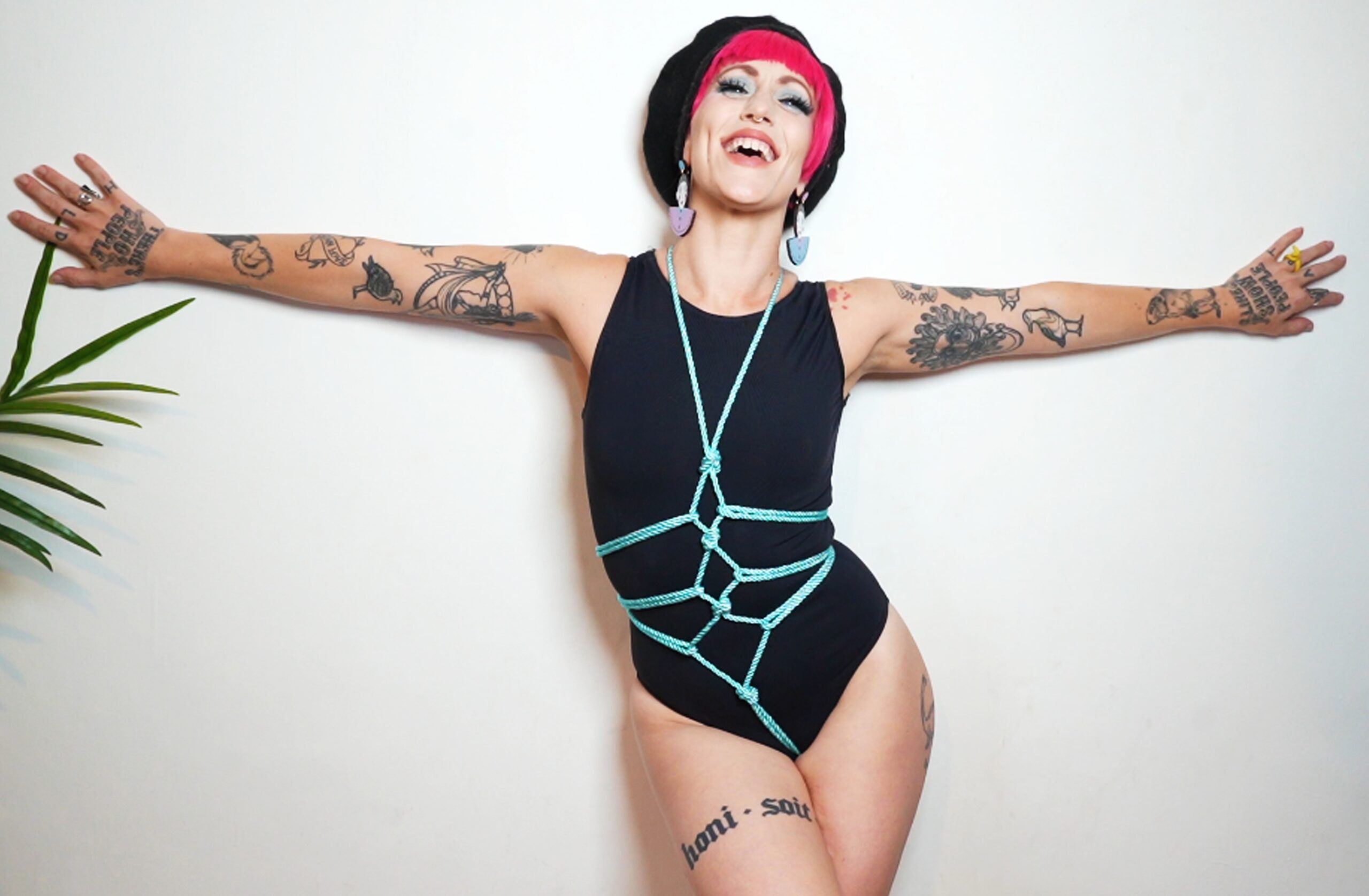Challenging Traditional Views
Challenging traditional views on sexuality means moving beyond rigid definitions of what constitutes “normal” or “acceptable” attractions.
For centuries, societal norms have largely confined sexual attraction to a binary framework: male attracted to female (heterosexual) and female attracted to female (lesbian). This binary, while seemingly straightforward, fails to capture the full spectrum of human experience.
Understanding that sexual orientation exists on a continuum, rather than in neat categories, is crucial.
This means recognizing that individuals can experience attraction to multiple genders, or to no gender at all.
The concept of the “gender binary” itself—the idea that there are only two distinct genders: male and female—is also being challenged.
More and more people identify as non-binary, meaning their gender identity doesn’t fall neatly into either category.
This fluidity in gender expression further complicates the binary view of sexual attraction.
Beyond the Binary explores the experiences of individuals whose attractions defy traditional categorization. It delves into the complexities of navigating a world that often struggles to understand and accept non-heteronormative identities.
It highlights the importance of using inclusive language, respecting individual self-identification, and fostering a society where all forms of love and attraction are celebrated.
Challenging traditional views on attraction requires a fundamental shift in perspective. For centuries, societal norms have heavily emphasized a binary understanding of gender and sexuality, often framing attraction as a strictly heterosexual or homosexual phenomenon. This rigid framework fails to capture the fluidity and diversity of human experience, neglecting the vast spectrum of identities and desires that exist beyond these narrow categories.
Exploring attraction through different lenses necessitates moving away from predefined labels and embracing a more inclusive and nuanced understanding. One crucial step is recognizing that gender identity and sexual orientation are distinct concepts. Gender identity refers to an individual’s internal sense of self as male, female, or somewhere in between. Sexual orientation describes who a person is attracted to romantically, emotionally, and/or sexually.
Within this framework, attraction can manifest in myriad ways. Some individuals may experience attraction exclusively within their gender identity (homosexual), while others may feel attracted to individuals outside of their gender identity (heterosexual). Furthermore, there are those who experience attraction across multiple genders (bisexual or pansexual) or identify as asexual, meaning they do not experience sexual attraction.
The concept of the gender binary itself is increasingly being challenged. Many people identify as non-binary, recognizing that gender is not a fixed dichotomy but rather a spectrum of possibilities. This fluidity extends to attractions as well, with individuals experiencing attraction that transcends traditional gender categories. For example, someone who identifies as non-binary may be attracted to both men and women, or they may experience attraction regardless of the other person’s gender identity.
Understanding attraction outside the gender binary requires acknowledging the validity and diversity of individual experiences. It necessitates dismantling rigid societal norms and embracing a more inclusive and accepting worldview. By challenging traditional views and exploring attraction through different lenses, we can foster a society that celebrates the full spectrum of human connection and desire.
Navigating Social Norms
Navigating social norms around sexuality, particularly those that fall outside the traditional binary of male-female attraction, can be complex and challenging.
Here are some key points to consider:
-
Understanding Social Norms: Societal expectations about gender and sexuality are deeply ingrained and often unspoken. These norms can create pressure to conform and may lead to discomfort or judgment towards those who express attraction outside the binary.
-
Challenging Biases and Stereotypes: Biases and stereotypes about individuals based on their gender identity or sexual orientation can be harmful and perpetuate inequality. It is important to recognize these biases, challenge them, and promote understanding and acceptance.
-
Respecting Individual Experiences: People’s experiences with attraction are unique and personal. What feels right for one person may not feel the same for another. Respecting individual autonomy and choices is crucial.
-
Promoting Inclusive Language: Using inclusive language that acknowledges the diversity of gender identities and sexual orientations can help create a more welcoming and understanding environment.
-
Educating Yourself: Learning about different gender identities and sexual orientations can broaden your understanding and empathy. There are many resources available online and in libraries that can provide valuable information.
Navigating these complexities requires ongoing effort, self-reflection, and a commitment to creating a more inclusive and accepting society for all individuals.
Navigating social norms around _sexual attraction_ outside the gender binary can be complex and challenging. Traditional societal structures often categorize people into strictly defined male and female roles, leading to assumptions about who should be attracted to whom.
These rigid norms can make it difficult for individuals who experience _attraction_ that falls outside these binaries to feel understood or accepted. Individuals may grapple with internalized messages that question their identity and experiences, leading to feelings of confusion, shame, or isolation.
Building inclusive communities is essential in creating a supportive environment where individuals can explore their _sexualities_ freely and authentically. This involves challenging ingrained biases and promoting understanding through open communication and education.
One crucial step is fostering **visibility** and representation of diverse sexual orientations and gender identities within communities. This can involve highlighting the stories and experiences of LGBTQ+ individuals in various media platforms, educational materials, and public spaces.
Creating safe and welcoming spaces for dialogue is another important aspect. Community centers, support groups, and online forums can provide platforms for individuals to connect with others who share similar experiences, offer emotional support, and advocate for their rights.
Education plays a vital role in dismantling harmful stereotypes and promoting empathy. Schools, workplaces, and community organizations can incorporate _sexual_ and gender diversity into their curriculum, training programs, and policies to foster inclusivity from an early age.
It’s important to remember that navigating social norms is an ongoing process. Building inclusive communities requires continuous effort, self-reflection, and a willingness to challenge the status quo. By embracing _diversity_ and fostering understanding, we can create a more equitable and accepting world for all individuals.
Embracing Individuality
Embracing individuality means acknowledging that human experiences, desires, and expressions are diverse and multifaceted. It transcends rigid societal norms and expectations, recognizing that love and desire can manifest in countless ways.
When we celebrate diverse expressions of love and desire, we create a space where individuals feel safe to explore their authentic selves without fear of judgment or ostracism. This includes embracing those who identify outside the gender binary – individuals whose gender identities don’t fit neatly into the traditional categories of male or female.
Understanding sexual attraction outside the gender binary requires a shift in perspective. It challenges the binary understanding of sex and gender, recognizing that these are not always congruent or fixed.

For example, someone who identifies as non-binary might experience attraction to people of all genders, including those who identify as male, female, or non-binary. Their attractions may be fluid and evolve over time, just like anyone else’s.
It’s important to remember that labels are not always necessary or helpful in understanding individual experiences. Someone might use a label like “pansexual” to describe their attraction to all genders, while another person might prefer a more nuanced description that reflects the complexities of their own identity and desires.
The key is to approach conversations about sexual orientation and gender identity with curiosity, respect, and a willingness to catapult sex position learn.
By embracing individuality and celebrating diverse expressions of love and desire, we create a more inclusive and compassionate world for everyone.

Embracing individuality is fundamental to fostering understanding and acceptance within any community, particularly when navigating the complexities of sexual attraction outside the gender binary. Recognizing that individuals experience and express their identities in diverse ways allows for a more inclusive and respectful environment.
Open communication plays a crucial role in establishing healthy relationships built on mutual respect and understanding. When individuals feel safe to openly discuss their feelings, desires, and boundaries, it creates an atmosphere of trust and intimacy. This is especially important within the context of exploring attractions outside the gender binary, where traditional labels may not always accurately reflect individual experiences.
Consent is paramount in all interactions, but its importance is amplified when navigating complexities related to gender and sexuality. It necessitates ongoing, enthusiastic, and informed agreement from all parties involved. This means clearly communicating desires and boundaries, actively listening to the responses of others, and respecting the right of anyone to change their mind at any time.
Building a society that embraces individuality requires a shift in perspective. It involves challenging rigid societal norms and expectations surrounding gender and sexuality. Encouraging empathy, curiosity, and open-mindedness allows for greater understanding and acceptance of the diverse range of human experiences.
Education plays a vital role in fostering this shift. By providing accurate and inclusive information about gender identity, sexual orientation, and relationships, individuals can develop a more nuanced understanding of the complexities involved. This includes challenging misinformation and stereotypes that perpetuate harmful attitudes and discrimination.
Ultimately, creating a society where everyone feels safe to explore their identities and express their attractions requires a collective effort. It involves advocating for policies that protect the rights of all individuals, promoting inclusive language and representation, and fostering open dialogue and understanding within communities.
Catch up with the full article
Discover all the major points
- Skin Treatment & Skincare Consultations Near Seale, Surrey - November 11, 2025
- Why CBD Gummies Are Popular For Improving Sleep And Reducing Anxiety - November 7, 2025
- What Is The Best Lip Filler Technique - November 4, 2025
